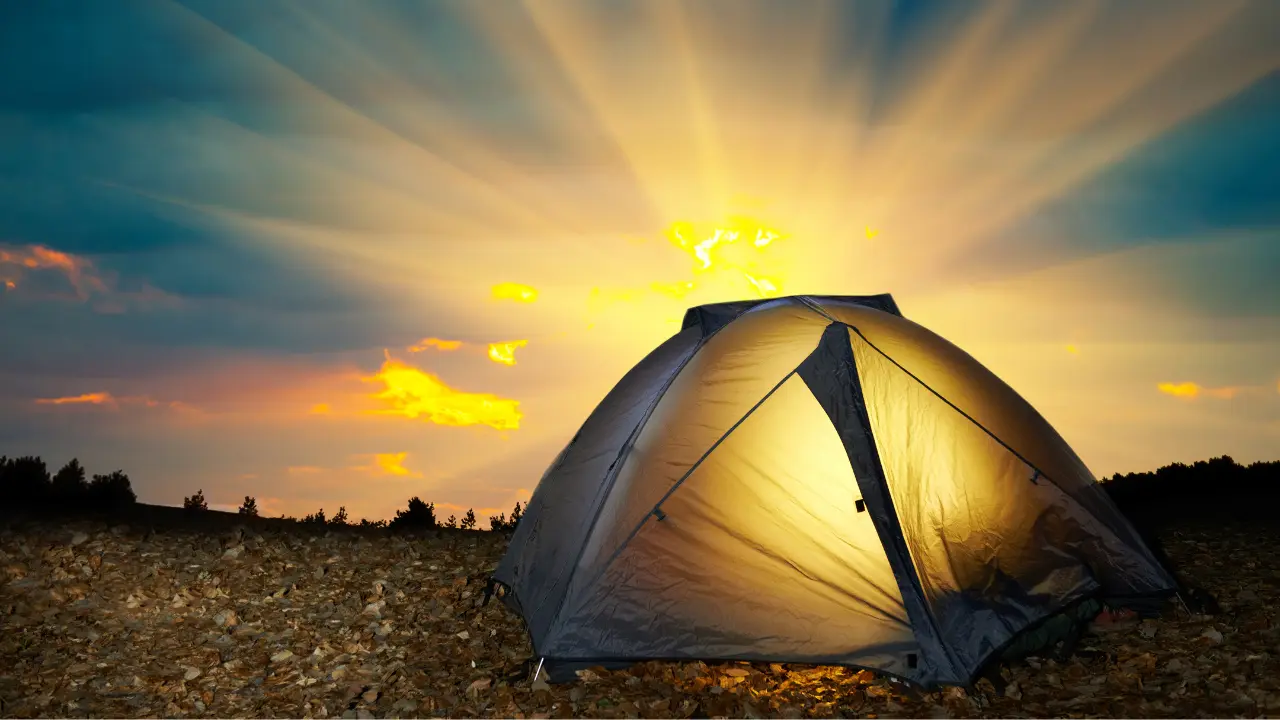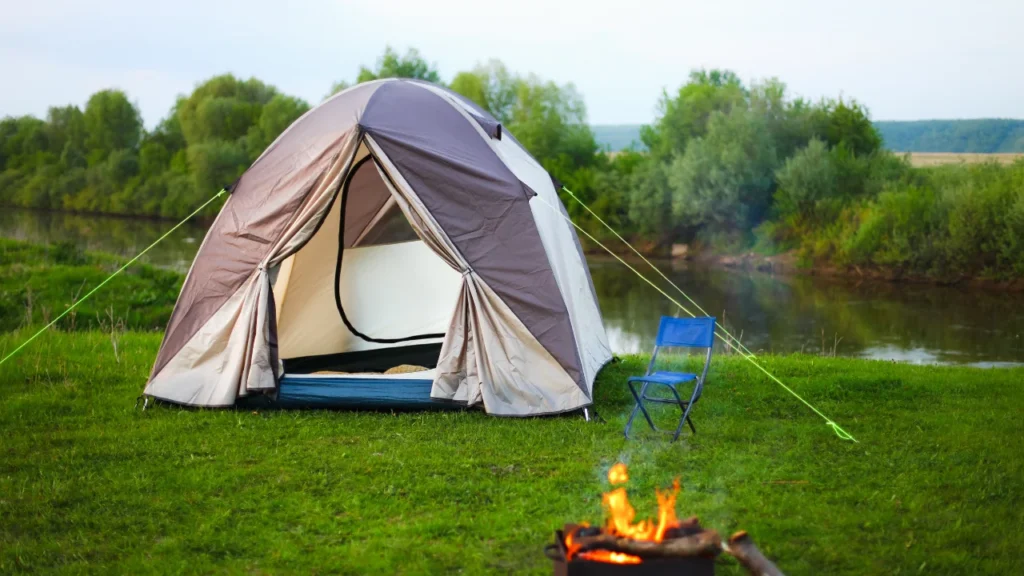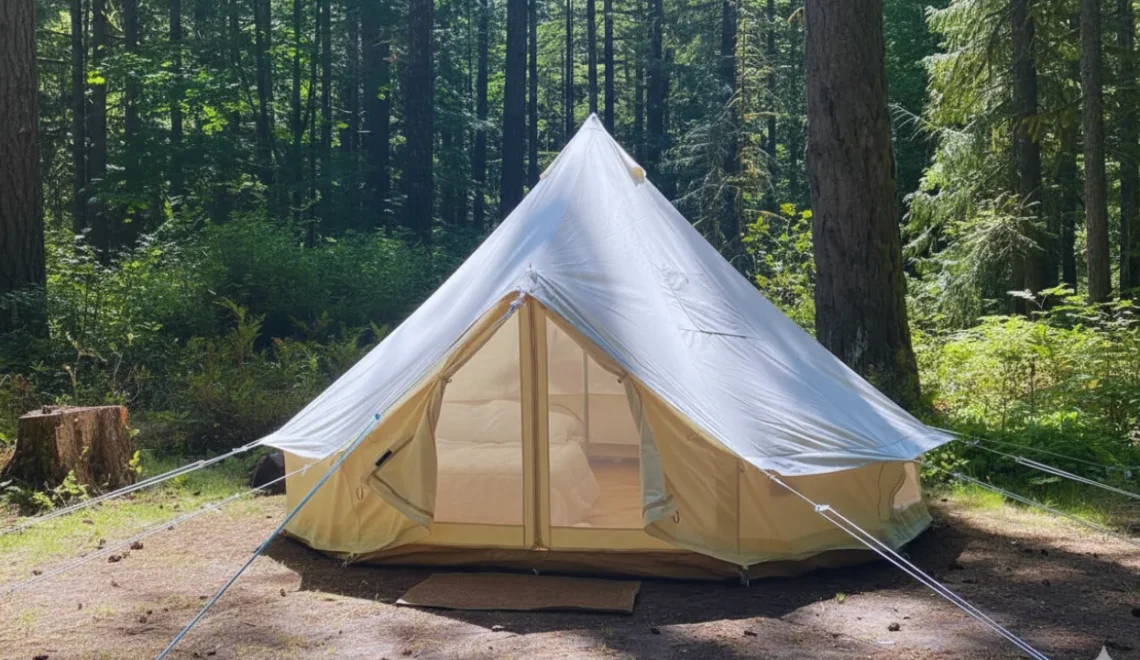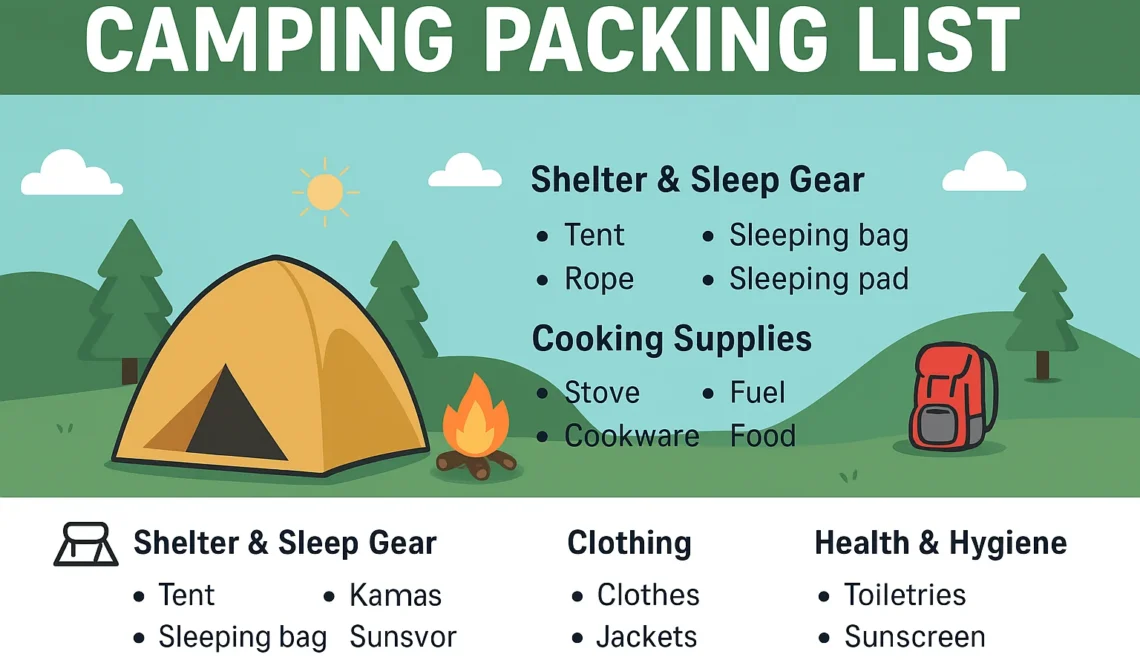
Camping Without a Tent – Experience True Freedom
Imagine spending a night under the open sky, surrounded by the great outdoors, but without the usual comfort of a tent. If you’re tired of the typical camping experience or don’t have the funds for a fancy setup, this could be the perfect trip for you. It may seem intimidating at first—after all, sleeping outside with minimal shelter can feel like stepping into the unknown. However, the rewards of this outdoor experience are well worth the effort. From bivouacking to cowboy tents, there are several ideas that let you embrace the simplicity and boldness of camping, connecting more deeply with nature. Whether you’re an experienced camper or a newbie, this way of camping allows you to break free from the usual boundaries, letting you sleep closer to the ground and feel the comfort of the natural world.
This style of camping requires planning and a bit of experimentation. It’s not just about sleeping outdoors, but about creating a comfortable space that suits your liking. You’ll need to focus on the basics, such as the right clothing and specialized knowledge to ensure safety and comfort. If you’re willing to embrace the challenge, the experience will be incredibly memorable, offering a unique combination of independence and research. It’s not just about getting by with minimal gear; it’s about finding joy in simplicity and gaining a deeper connection with the wild. Even without a tent, you’ll find that the security and peace that nature offers can bring a sense of success and fulfillment like no other.
Tips For Camping Without A Tent
Exploring Alternative Camping Options
If the idea of sleeping in a tent doesn’t excite you, there are plenty of camping-adjacent options that still offer an incredible outdoor experience. For example, cabins and yurts provide comfortable sleeping arrangements while keeping the spirit of camping alive. A log-style Camping Cabin offers electricity, full-size beds, bunk beds, and even an outdoor barbecue with a front porch and a swing to enjoy the outdoor space. If you’re looking for something with a bit more luxury, a Deluxe Cabin comes with modern amenities like kitchens, private bathrooms, showers, and cable TV. You can still enjoy the fire pit and patio for a true camping vibe, all while staying cozy.
For a more rustic experience, consider a teepee or a yurt. These structures, often found in various locations across the country, offer a traditional yet unique alternative to a tent. Teepees, with their circular shape and latticed wood, bring a bit of history, making it feel like you’re stepping back to the days of Native Americans and early settlers. Many feature beds, futons, and electricity. Alternatively, a yurt, originally from Central Asia, provides even more space and often includes comfortable beds. If you prefer a bit more modern comfort, glamping options like the walled tent or safari tent blend the best of both worlds, with enough space to feel like you’re in a cabin while still being connected to nature. If you want the ultimate in comfort, an RV or Airstream trailer at a campground offers the protection of a trailer-style unit, complete with a kitchen, bathroom, and a retro-vibe that many campers adore. These options allow you to enjoy traditional camping without compromising on comfort or security.
Stay Organized for a Smooth Camping Experience
When preparing for your trip to camp without a tent, the key is organizing everything to avoid any last-minute hassle. Start by prepping your meals ahead of time, which will save you plenty of time during the actual camping. Labeling a box full of kitchen supplies can also be a lifesaver. Don’t forget to keep your toiletries easily accessible, especially if you’re walking to the bathroom. When packing clothing, make sure to place your coziest clothes at the top of your bag so you can quickly grab them when the sun goes down or the weather turns colder. This way, you can spend more time relaxing in your comfy chair around the fire and less time searching for what you need.
A Cowboy Camping Experience
A friend and I decided to try cowboy camping, which is exactly as it sounds—sleeping almost on the ground and beneath the stars, much like the cowhands of yore. I had always wanted to do this but never had the nerve to go without the protection of a tent. Armed with just a sleeping bag, roll mat, and pillow, we headed off to the beach, bringing along a swimming costume, torch, snacks, and pyjamas for comfort. It was a perfect night, waking up to the sun and feeling the freedom of sleeping under the stars. The one downside was that bugs could be a problem, but we came prepared with nets, sprays, and patches to keep them at bay.
Making Camping Without A Tent Easier
Building a fire from scratch can feel primal, but it often takes ages to get a proper fire going if you’re not experienced. To make the process easier, bring along some fire starters and charcoal briquettes if you’re grilling. Another useful tip is to keep a hot water bottle in your sleeping bag to retain heat throughout the night. You can also burn some sage around your campsite to keep the bugs away. These small camping hacks will allow you to spend more time enjoying your outing and less time fighting with the fire.
Bivvy Bags and Shelters
If you’re looking for a way to sleep outdoors without a tent, a bivi bag or bivvy could be just what you need. These are waterproof covers designed for your sleeping bag, offering protection from condensation and keeping you discreet while wild camping. For extra comfort and breathability, make sure the bivvy is breathable. If you’re planning on longer adventures, you might want to consider a bivy sack with poles, which provides more room than a simple sleeping bag setup. A bivvy shelter is a great option since it’s light, easy to carry, and keeps you protected from the elements.
Don’t Skimp on Dinner
When you’re cooking around a campfire, you don’t have to be stuck eating the usual can of beans for dinner. In fact, this is the perfect time to put your cooking skills to the test and try something more exciting. Invest in a Dutch oven and start exploring some delicious recipes to create a gourmet meal in the outdoors. To maximize your cook time and minimize any frustration, do as much prep as possible before you leave the house, like chopping veggies or mixing spices. With a little planning, you can enjoy great food under the stars.
Hammocks and Comfort
If you don’t want to sleep on the floor, a hammock is a great choice for relaxing in the great outdoors. Many people find it more comfortable than traditional tents. Set up your hammock in a forest or woodland, where you can easily suspend it between trees. If there’s a chance of rain, don’t forget to bring a rainfly—you can use a tarp and paracord to make your own. For a more comfortable experience, even if you’re using a sleeping bag in a tent, consider adding an inflatable air mattress and bedding. If you’re car camping, don’t forget pillows, as they make a huge difference. Keep a battery-operated lantern near your bed to light the way if you wake up during the night. Let the kids bring their favorite stuffed animals or blankets, but remember to put them back in the car in the morning to keep them from getting dirty.

Rig up a Tarp for Shelter and Comfort
If you don’t want to use a tent, you can construct a tarp shelter. You can choose a big one with full coverage on both sides or a more minimalist tarp that just covers one side. This will provide some privacy and keep you dry. Along with the tarp, bring a ground tarp to keep your gear clean and dry, while preventing any damage. In the evening, make your camping spot comfortable by setting up camp chairs with cup holders and armrests to create a cozy sitting area near the fire ring or a picnic table. You can also add some small, inexpensive tables from sporting goods stores, or use a milk crate to place drinks, hors d’oeuvres, and even burn candles (like citronella, which is great for repelling mosquitoes). A vase filled with cheery flowers will add a nice touch to your campsite.
Sleeping in Your Vehicle
If you don’t have a tent, sleeping in your car or truck is a great option. Simply fold down the seats to make them flat, then place a sleeping bag on the floor. Add some cushions, blankets, or pillows for a more comfortable experience. For extra peace of mind and security, especially when you’re in stealth mode while camping, consider installing a mini GPS tracker in your vehicle in case of bad weather or other situations.
Frequently Asked Questions (FAQs)
Can I camp without a tent?
Yes, you can definitely camp without a tent. Options like hammocks, tarp shelters, and even sleeping in your vehicle are great alternatives. It all depends on your comfort level and what you prefer for shelter.
How can I stay comfortable without a tent?
To stay comfortable, bring items like a sleeping bag, pillows, blankets, and cushions. Using a ground tarp or a hammock can also make a huge difference. For added comfort, consider inflatable air mattresses and even a battery-operated lantern for some light.
How do I protect myself from bugs while camping without a tent?
To keep bugs away, you can use nets, sprays, or citronella candles around your campsite. These will help you enjoy your outdoor experience without worrying about insects.
Is it safe to camp without a tent?
Camping without a tent can be safe as long as you take the proper precautions. Ensure you have a GPS tracker, keep your gear secure, and stay aware of your surroundings, especially in areas with unpredictable weather or wildlife.
Can I sleep in my car while camping?
Camping without a tent can be safe as long as you take the proper precautions. Ensure you have a GPS tracker, keep your gear secure, and stay aware of your surroundings, especially in areas with unpredictable weather or wildlife.
What’s the best way to cook without a tent?
You can cook with a campfire, portable stove, or even using a Dutch oven. Prep your meals ahead of time to make cooking easier. Bring snacks, and use camp chairs and small tables to set up your cooking area.
How can I stay dry without a tent?
To stay dry, bring a rainfly for your tarp shelter, and consider bivvy bags for extra protection from rain. A ground tarp will also keep you and your gear dry. If you’re in your vehicle, make sure it’s secure and covered.
How do I deal with bad weather when camping without a tent?
If you’re camping without a tent, always check the weather beforehand. Bring a rainfly, have a mini GPS tracker for peace of mind, and make sure you’re set up in a safe, sheltered location.
Conclusion
Camping without a tent opens up a whole new way to experience the great outdoors. Whether you’re choosing to sleep under the stars, use a hammock, or even sleep in your vehicle, the possibilities are endless for a unique and memorable adventure. The key to a successful tent-free camping trip lies in proper preparation and using alternative shelters like tarp setups or bivvy bags. These options not only provide protection from the elements but also offer the opportunity to connect more closely with nature, all while staying comfortable and secure. With the right gear, planning, and comfort items, you can enjoy your outdoor escape without the traditional tent setup.
While camping without a tent may seem unconventional, it can be just as enjoyable, if not more so, than the standard camping experience. By bringing along a sleeping bag, pillows, and a battery-operated lantern, you can create a cozy environment no matter where you choose to set up camp. Remember to prepare for bugs, bad weather, and any other outdoor challenges with helpful tools like rainflies, citronella candles, and GPS trackers for safety. Whether you’re looking for a minimalist approach or a more luxurious camping experience, going without a tent allows you to discover a new way of exploring the wilderness.



